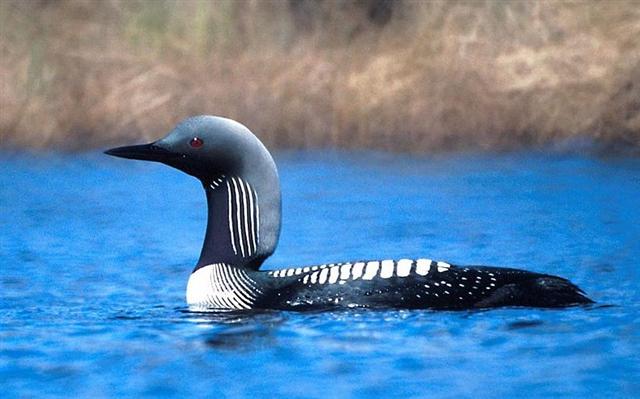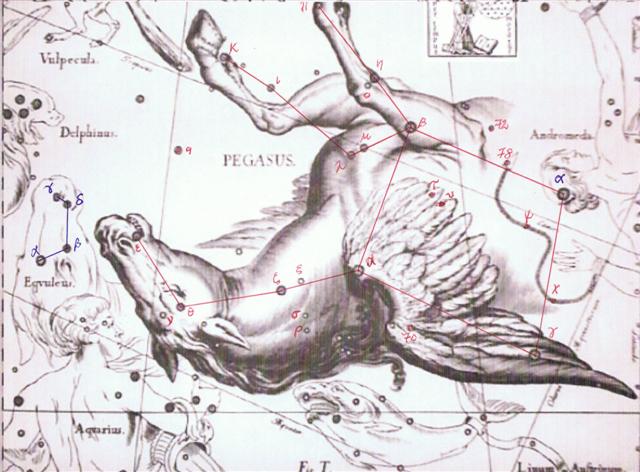Considering that the beginning of side a could represent the time from the March equinox, we should be able to postulate that the year would be ending after 284 glyphs counted from Ca1-1, that should be the end of the Gregorian year. In Ca11-2 there are 3 eyes (mata) in front, possibly illustrating the 3 quarters to autumn equinox. And the peculiar Rogo figure in Ca11-3 has a still closed fist in front:
The Gregorian year is beginning with January 1 and in C the measure could be 10 months counted from the March equinox. Ain al Rami (the Eye of the Archer) is ν Sagittarii.
... In the morning of the world, there was nothing but water. The Loon was calling, and the old man who at that time bore the Raven's name, Nangkilstlas, asked her why. 'The gods are homeless', the Loon replied. 'I'll see to it', said the old man, without moving from the fire in his house on the floor of the sea. Then as the old man continued to lie by his fire, the Raven flew over the sea. The clouds broke. He flew upward, drove his beak into the sky and scrambled over the rim to the upper world. There he discovered a town, and in one of the houses a woman had just given birth ... According to the Hindu there was a 'snake in the water' associated with 'the 2nd of the blessed feet'. Sun was feeble (or even dead) in the dark days after day 350 (= 50 weeks), before he had reached Sheratan. His first point was in Aries and in rongorongo times Sheratan rose with the Sun in April 17 (107 = 80 + 27), i.e. 25 days after March 23:
According to the Gregorian calendar Old Sun gave way to the new year baby when December (the 12th month) went away. The 'man with 2 faces' alludes to Janus (of January), but the idea of the old year giving way to a newborn year was equally possible to use in the time of Pegasus.
Ca11-1 (111) could represent the completed December 30, and 392 (glyphs on side a) - 285 = 107 (April 17 - if March 31 was day 90). Atlas (with the rest of the Pleiades stars) culminated at midnight in December 31, where 393 (counting also the 'full hand' of March 21) - 286 = 107. Side b of the tablet appears to begin where Sheratan was rising with the Sun, in April 17, i.e. in Gregorian day 107, if the year was a regular year and not a leap year. But it appears to have been a leap year:
Maybe the Easter Island version of the Gregorian calendar counted the beginning from December 30 (364 = 52 weeks). In which case April 17 would be day 108. Or rather, it would anyhow be day 107 because days (or hours etc) which had not been completed should not be counted. The 12th hour of the day is not finished before noon, the first birthday is not celebrated until a year has passed, etc. But then we should count from December 31 (when the Tauono culminated) as day zero: 0 + 31 + 29 + 31 + 17 = 108. In C there evidently could have been a day at February 29, not as I have described it a day (or night) to jump over but a day to be counted like the rest. If this is correct, then I maybe ought to transfer ο Pegasi and Matar (η Pegasi, 'the star of life in death') from Cb6-19 to Cb6-20. Both these stars are at the knee joint of the right front leg:
Side a was probably beginning at the March equinox (80 days from January 1) and side b either 107 or 108 days from January 1. Neither these 80 days nor these 107 (or 108) days can without hesitation be identified as dark periods outside the regular calendar. But if the full cycle was defined as 1½ * 314 days, then there ought to be around 471 - 364 = 107 'notches' (night marks) outside the Sun calendar. These added nights ought to be ruled by the Moon and be positive in meaning (a place for birth). We can compare with how the Mayan Maize God emerges through a crack in the hard shell of the Turtle:
It could be the water carrier (Aquarius) at left and the air god at right. I have reversed the picture from the Mayan custom so it will be easier to understand. For us time runs with the Sun from left to right.
The Turtle should be Pawahtun: ... An iconographic study by Jeff Kowalski suggests a cosmological layout for the Nunnery. The higher placement of the North Building, with its 13 exterior doorways (reflecting the 13 layers of heaven), and the celestial serpents surmounting the huts identify it with the celestial sphere.  The iconography of the West Building, with 7 exterior doorways (7 is the mystic number of the earth's surface), and figures of Pawahtun - the earth god as a turtle - indicate this to be the Middleworld, the place of the sun's descent into the Underworld. The East Building has mosaic elements reflecting the old war cult of Teotihuacan, where tradition had it that the sun was born; thus, this may also be Middleworld, the place of the rising sun. Finally, the South Building has 9 exterior doorways (the Underworld or Xibalba had 9 layers), and has the lowest placement in the compex; it thus seems to be associated with death and the nether regions ... 13 + 7 + 9 = 29 days could be the month for measuring the path of Sun. The number of glyphs on the Tahua tablet is measured as multiples of 29:
But then we should search for the end of the Sun year relying on multiples of 29. It must be 13 * 29, because 12 * 29 = 348 (equal to the number of glyphs on side b of the C tablet) is too low a figure:
| |||||||||||||||||||||||||||||||||||||||||||||||||||||||||||||||||||||||||||||||||||||||||||||||||||||||||||||||||||||||||||||||||||||||||||||||||||||||||||||||||||||||||||||||||||||||||||||||||||||||||||||||||||||||||||||||||||||||||||||||||||||||||||||||||||||||||||












